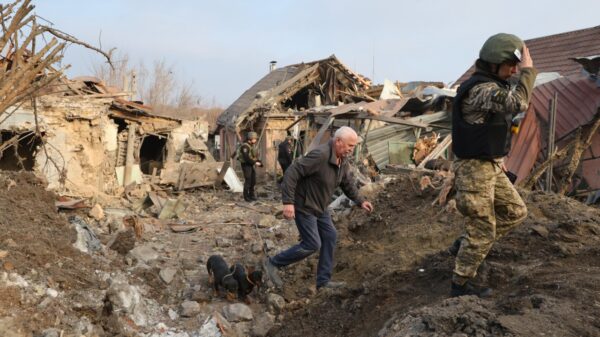URGENT UPDATE: Wildfires in California and Oregon have escalated dramatically, forcing the evacuation of hundreds of residents as firefighters race against time to contain the blazes. The Pickett Fire in Napa County has expanded to over 10 square miles (26 square kilometers) and is only 11% contained as of early this morning, according to the California Department of Forestry & Fire Protection.
Authorities have ordered approximately 190 residents to evacuate their homes, while another 360 people are on alert, as the fire threatens around 500 structures near Aetna Springs and Pope Valley. Firefighters, numbering over 1,230, supported by ten helicopters, are engaged in a fierce battle against the flames that ignited Thursday amid a prolonged heat wave across the region.
Meanwhile, in Oregon, the Flat Fire has surged to nearly 34 square miles (88 square kilometers) with no containment in sight, posing a severe risk to approximately 4,000 homes. Around 10,000 individuals are currently under some form of evacuation notice, as the fire has rapidly intensified since its start Thursday night, driven by hot, gusty conditions.
As of today, temperatures are predicted to reach dangerous highs, continuing a trend that has already hospitalizing numerous individuals across the Western United States. Fire officials report that humidity levels are expected to drop, and winds will pick up in the afternoon, creating further challenges for containment efforts.
Jason Clay, spokesperson for the Calfire Sonoma Lake-Napa Unit, warned, “That’s been a driving factor in the afternoons since we’ve seen the fire activity pick up for the last three days.” He emphasized that support from across California has been critical in battling these fires.
The current conditions are eerily reminiscent of the catastrophic Glass Fire in 2020, which devastated approximately 105 square miles (272 square kilometers) and destroyed over 1,500 structures. The prevailing dry vegetation, including remnants from past fires, is exacerbating the current situation, according to fire officials.
As authorities continue to monitor the situation, isolated thunderstorms are being tracked in Southern Oregon, which could further complicate firefighting efforts. Scientists have noted that while it is difficult to link any single event directly to climate change, the increasing frequency of heat waves and drought conditions due to human-caused climate change are setting the stage for more destructive wildfires.
Stay tuned for updates on this developing situation as emergency services work tirelessly to protect communities in the path of these raging fires.







































































